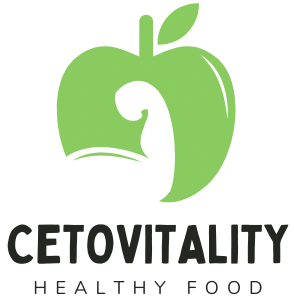If you’re considering starting a keto diet, there are some essential supplements that can help support your overall health and wellbeing. Whether you’re a beginner or someone who has been following the keto lifestyle for a while, incorporating these supplements into your routine can provide added benefits. From electrolytes to omega-3 fatty acids, these supplements can help address nutrient deficiencies, promote optimal brain function, and support your body’s ability to adapt to ketosis. By adding these supplements to your daily regimen, you can ensure that you’re giving your body the support it needs to thrive on a keto diet.

Creating an Effective Meal Plan
Calculating Macros and Calories
When starting a keto diet, it is crucial to understand how to calculate your macros and calories. Macros, short for macronutrients, refer to the three main components of your diet: fats, proteins, and carbohydrates. On a keto diet, you aim to consume a high amount of fat, moderate protein, and very low carbohydrates.
To calculate your macros, you can use an online calculator or consult with a nutritionist. The calculator will take into account your age, weight, height, activity level, and goals to determine the ideal macros for your keto diet. By tracking your macros and counting calories, you will have a better understanding of what you’re consuming and can adjust as needed for your specific goals.
Meal Prep Tips and Tricks
Meal prepping is a valuable strategy when following a keto diet, as it ensures you have healthy and keto-friendly meals ready to go throughout the week. Here are some meal prep tips and tricks to help you stay on track:
-
Plan your meals: Take some time each week to plan your meals, including breakfast, lunch, dinner, and snacks. This will help you stay organized and avoid making unhealthy food choices.
-
Batch cook: Prepare large quantities of keto-friendly foods and store them in individual containers. This way, you can quickly grab a pre-portioned meal when you’re in a hurry.
-
Utilize your freezer: Many keto meals can be frozen without losing their flavor or texture. Prepare extra portions and freeze them for later use. This can be a lifesaver on busy days or when you don’t feel like cooking.
-
Pre-cut vegetables: Chop up your vegetables in advance and store them in the refrigerator. This will save you time when you’re ready to cook and make it easier to incorporate more vegetables into your meals.
-
Keep snacks on hand: Prepare keto-friendly snacks and portion them out in advance. This way, you’ll have healthy options readily available when hunger strikes.
Meal prepping can significantly simplify the keto diet and help you stay consistent with your eating habits. With a little planning and preparation, you can set yourself up for success on your keto journey.
Snack Ideas and Options
When following a keto diet, it’s important to have satisfying and delicious snacks on hand to curb cravings and keep you satisfied between meals. Here are some snack ideas and options that are keto-friendly:
-
Nuts and seeds: Almonds, walnuts, and sunflower seeds are excellent choices for a quick and easy keto snack. They are packed with healthy fats and provide a crunch that satisfies cravings.
-
Cheese and charcuterie platter: Create a keto-friendly cheese and charcuterie platter by selecting a variety of cheeses and cured meats. This snack is both satisfying and visually appealing.
-
Guacamole and celery sticks: Whip up a batch of guacamole and enjoy it with crunchy celery sticks. Avocado is a great source of healthy fats and pairs perfectly with the refreshing crunch of celery.
-
Keto smoothies: Blend together a combination of unsweetened almond milk, spinach, avocado, and a low-carb protein powder for a creamy and nutritious keto smoothie.
-
Keto fat bombs: These high-fat and low-carb treats are not only delicious but also satiating. Made with ingredients like coconut oil, almond butter, and cacao, fat bombs can be a satisfying treat while staying true to your keto goals.
Remember to always read the nutrition labels and choose snacks that are low in carbohydrates and high in healthy fats. With these snack ideas and options, you’ll never have to worry about feeling deprived while following a keto diet.


Understanding Keto Principles
What is Ketosis?
Ketosis is the metabolic state that occurs when your body starts using fat as its primary source of fuel instead of carbohydrates. When following a keto diet, you limit your carbohydrate intake to a very low amount, typically below 50 grams per day. This restriction of carbohydrates causes your body to enter a state of ketosis.
In ketosis, your liver produces ketones as a byproduct of breaking down fats. These ketones are then used by your body as an alternative fuel source, including your brain. This shift from using carbohydrates for energy to using fats and ketones can have numerous benefits, including weight loss, increased energy, and improved mental clarity.
How Carbohydrates and Insulin Impact the Body
Carbohydrates are the body’s preferred source of energy. When you consume carbohydrates, they are broken down into glucose, which is released into the bloodstream. In response to rising blood sugar levels, the pancreas releases insulin to help regulate glucose levels and transport it into cells for energy or storage.
On a traditional high-carbohydrate diet, insulin levels tend to remain elevated due to frequent carbohydrate consumption. This can lead to insulin resistance, where the cells become less responsive to insulin’s action, resulting in higher blood sugar levels and weight gain.
In contrast, on a keto diet, carbohydrate intake is minimal, which leads to lower insulin levels. By minimizing carbohydrates, you can stabilize blood sugar levels, improve insulin sensitivity, and promote fat burning.
The Role of Fat and Protein in the Keto Diet
The keto diet is characterized by a high intake of dietary fat and a moderate intake of protein. Both of these macronutrients play essential roles in the success of a keto diet.
Fat serves as the primary source of energy on a keto diet. By increasing your fat intake, you provide your body with the fuel it needs to enter and maintain a state of ketosis. Healthy sources of fats on a keto diet include avocados, nuts and seeds, olive oil, coconut oil, and fatty cuts of meat.
Protein is necessary for various bodily functions, such as building and repairing tissues, producing enzymes and hormones, and supporting the immune system. However, it is important to moderate protein intake on a keto diet, as excessive amounts can be converted into glucose through a process called gluconeogenesis. This can hinder ketosis and slow down fat burning.
Finding the right balance between fat and protein is key to maintaining ketosis and reaping the full benefits of the keto diet. Each person’s needs may vary, so it is essential to consult a nutritionist or use an online calculator to determine your individual macronutrient ratios.

Cooking Tips for Beginners
Essential Kitchen Tools and Equipment
When embarking on your keto journey, having the right kitchen tools and equipment can make a significant difference in your cooking experience. Here are some essential tools to have in your keto kitchen:
-
Food scale: A food scale allows you to accurately measure your ingredients and ensure you’re portioning your meals correctly. This is especially important when tracking your macros and calories on a keto diet.
-
Blender or food processor: A blender or food processor can be used to make keto smoothies, homemade nut butter, and sauces. It’s a versatile tool that can help create delicious and nutritious meals.
-
Non-stick pans: Investing in good quality non-stick pans can prevent your keto-friendly dishes from sticking and ensure easy cleaning. This is particularly useful when cooking eggs, pancakes, and stir-fries.
-
Spiralizer: A spiralizer is a handy tool for turning vegetables like zucchini or cucumber into low-carb pasta alternatives. This allows you to enjoy your favorite pasta dishes while staying true to your keto goals.
-
Oven and baking trays: Having an oven and a variety of baking trays opens up a wide range of keto-friendly cooking options. You can roast vegetables, bake casseroles, and make homemade keto cookies or bread.
By equipping your kitchen with these essential tools and equipment, you’ll have everything you need to create delicious and satisfying meals on your keto diet.
Simple and Delicious Keto Recipes
Cooking delicious and satisfying meals is an essential part of enjoying and sticking to a keto diet. Here are some simple and delicious keto recipes to get you started:
Keto Cauliflower Fried Rice:
Ingredients:
- 2 cups cauliflower rice
- 1 tablespoon coconut oil
- 1/2 cup diced bell peppers
- 1/2 cup diced onions
- 1/4 cup diced carrots
- 2 cloves garlic, minced
- 2 tablespoons soy sauce or tamari (gluten-free option)
- 2 eggs, beaten
- Optional toppings: chopped green onions, sesame seeds
Instructions:
- Heat coconut oil in a large skillet or wok over medium heat.
- Add diced bell peppers, onions, carrots, and garlic to the skillet. Cook until vegetables are tender.
- Push the vegetables to one side of the skillet and add beaten eggs to the other side. Scramble the eggs until cooked.
- Mix the scrambled eggs with the vegetables and add cauliflower rice. Stir in soy sauce or tamari.
- Cook for an additional 5 minutes, until cauliflower rice is cooked through.
- Serve hot, topped with chopped green onions and sesame seeds if desired.
Creamy Garlic Parmesan Chicken:
Ingredients:
- 4 boneless, skinless chicken breasts
- 2 tablespoons butter
- 4 cloves garlic, minced
- 1/2 cup chicken broth
- 1 cup heavy cream
- 1/2 cup grated Parmesan cheese
- Salt and pepper to taste
- Fresh parsley, chopped (optional garnish)
Instructions:
- Season chicken breasts with salt and pepper on both sides.
- Melt butter in a large skillet over medium heat. Add minced garlic and cook until fragrant.
- Add chicken breasts to the skillet and cook for 6-7 minutes per side, or until cooked through.
- Remove chicken from the skillet and set aside.
- Pour chicken broth into the skillet and bring to a boil. Reduce heat and simmer for 2-3 minutes.
- Stir in heavy cream and grated Parmesan cheese. Cook until the sauce thickens.
- Return chicken breasts to the skillet and coat with the creamy garlic Parmesan sauce.
- Serve hot, garnished with fresh parsley if desired.
Bacon-Wrapped Asparagus:
Ingredients:
- 1 bunch asparagus
- 8-10 slices of bacon
- Salt and pepper to taste
Instructions:
- Preheat oven to 400°F (200°C).
- Wash and trim the ends of the asparagus.
- Wrap each asparagus spear with a slice of bacon. Secure with toothpicks if needed.
- Place wrapped asparagus on a baking sheet lined with parchment paper.
- Season with salt and pepper.
- Bake for 20-25 minutes, or until the bacon is crispy.
- Serve hot as a side dish or appetizer.
These recipes are just a starting point, and you can experiment with different ingredients and flavors to create your own keto-friendly meals. Remember to be mindful of your macros and portion sizes to stay on track with your keto goals.
Substituting Ingredients to Make Keto-Friendly Meals
One of the challenges of following a keto diet is finding suitable substitutes for high-carb ingredients commonly used in traditional recipes. However, with a little creativity, it is possible to transform your favorite meals into keto-friendly versions. Here are some common ingredient substitutions for a keto diet:
Flour substitutes:
- Almond flour: Almond flour is a nutritious and keto-friendly alternative to traditional wheat flour. It can be used in baking recipes, such as keto bread, pancakes, and cookies.
- Coconut flour: Coconut flour is another excellent option for keto baking. It provides a slightly sweet taste and adds moisture to baked goods. It is often used in combination with almond flour to achieve the desired texture.
Sugar substitutes:
- Stevia: Stevia is a natural, calorie-free sweetener derived from the stevia plant. It can be used in place of sugar in many recipes and is available in liquid or powdered form.
- Erythritol: Erythritol is a sugar alcohol that provides sweetness without the calories or impact on blood sugar levels. It can be used in baking, beverages, and as a topping for keto-friendly desserts.
Vegetable substitutes:
- Zucchini noodles: Replace traditional pasta with spiralized zucchini noodles. Zucchini noodles, also known as zoodles, are low in carbohydrates and make an excellent base for keto-friendly pasta dishes.
- Cauliflower rice: Swap out white or brown rice for cauliflower rice. Simply grate or process cauliflower florets into small rice-like pieces. Cauliflower rice can be used in stir-fries, fried rice, or as a side dish.
Dairy substitutes:
- Coconut milk: Use full-fat coconut milk as a substitute for regular milk or cream in recipes. It adds a rich and creamy texture to sauces, soups, and desserts.
- Nut-based milks: Almond milk, cashew milk, or macadamia nut milk can be used in place of cow’s milk. These nut-based milks are low in carbohydrates and provide a great source of healthy fats.
By exploring and incorporating these ingredient substitutions, you can enjoy a wide variety of keto-friendly meals while still satisfying your cravings and staying on track with your dietary goals.


